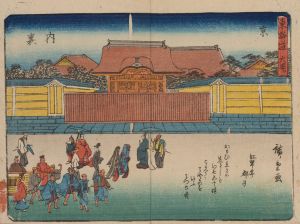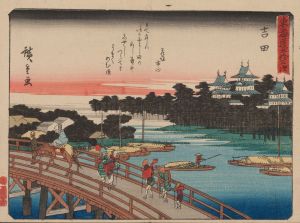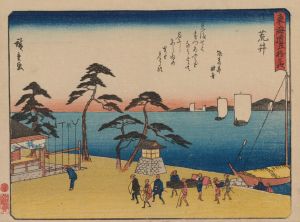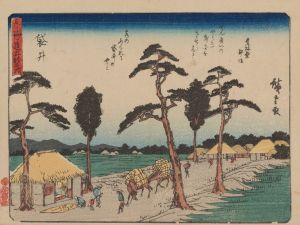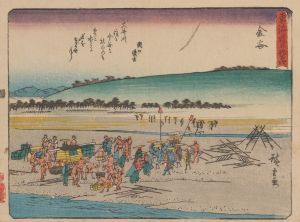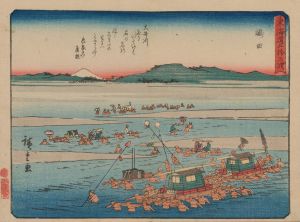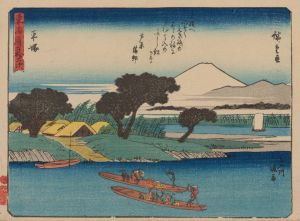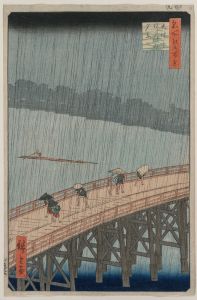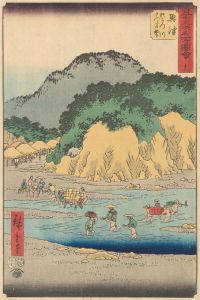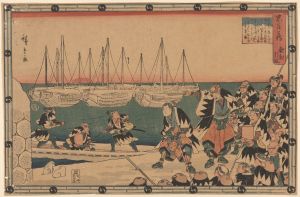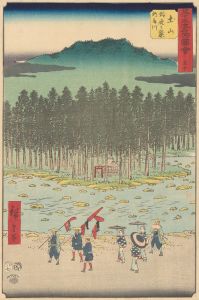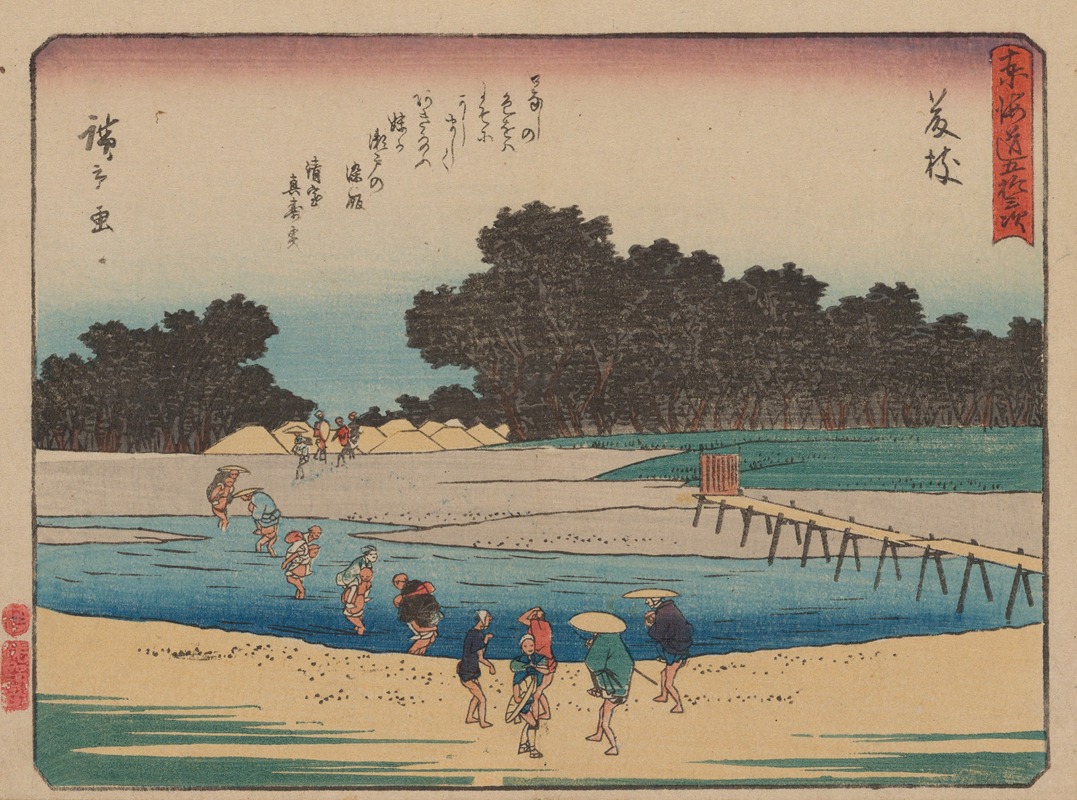
Tokaido gojusantsugi, Pl.23
A hand-painted replica of Andō Hiroshige’s masterpiece Tokaido gojusantsugi, Pl.23, meticulously crafted by professional artists to capture the true essence of the original. Each piece is created with museum-quality canvas and rare mineral pigments, carefully painted by experienced artists with delicate brushstrokes and rich, layered colors to perfectly recreate the texture of the original artwork. Unlike machine-printed reproductions, this hand-painted version brings the painting to life, infused with the artist’s emotions and skill in every stroke. Whether for personal collection or home decoration, it instantly elevates the artistic atmosphere of any space.
Andō Hiroshige, a renowned Japanese ukiyo-e artist of the Edo period, is celebrated for his landscape prints and depictions of everyday life. One of his most famous series is the "Tōkaidō Gojūsan-tsugi" or "The Fifty-three Stations of the Tōkaidō," which illustrates the journey along the Tōkaidō road, a vital route connecting Edo (modern-day Tokyo) to Kyoto. This series, created in the early 1830s, consists of 55 prints, including the starting point at Nihonbashi in Edo and the terminus at Kyoto, along with the 53 stations in between.
Plate 23 of this series captures the station of Fujieda, one of the post towns along the Tōkaidō. Hiroshige's work is known for its vibrant colors, dynamic compositions, and the ability to convey the atmosphere of the scene. In the Fujieda print, Hiroshige presents a lively depiction of travelers and local inhabitants engaged in daily activities, a common theme throughout the series. The print reflects the bustling nature of the post town, where travelers would rest, trade, and interact with the locals.
Hiroshige's attention to detail and his skillful use of perspective are evident in this work. The composition often includes elements such as distant mountains, flowing rivers, and the architecture of the time, providing a glimpse into the landscape and culture of 19th-century Japan. The Tōkaidō series, including the Fujieda print, is notable for its ability to capture the essence of travel and the diverse experiences encountered along the road.
The "Fifty-three Stations of the Tōkaidō" series was produced using the ukiyo-e woodblock printing technique, which involves carving images into wooden blocks, inking them, and pressing them onto paper. This method allowed for the mass production of prints, making art accessible to a broader audience. Hiroshige's work was highly popular in his time and continues to be celebrated for its artistic and historical significance.
Hiroshige's portrayal of Fujieda, like other prints in the series, is not just a representation of a physical location but also an exploration of the human experience of travel. The series as a whole captures the changing seasons, weather conditions, and the varied landscapes encountered along the Tōkaidō road. Each station offers a unique snapshot of life during the Edo period, contributing to the series' enduring appeal.
The "Fifty-three Stations of the Tōkaidō" had a significant impact on both Japanese and Western art. Hiroshige's work influenced many Western artists, including the Impressionists, who admired his use of color and composition. The series remains an important cultural artifact, providing insight into the Edo period's social and economic conditions, as well as the artistic practices of the time.
In summary, Andō Hiroshige's Plate 23 of the "Tōkaidō Gojūsan-tsugi" series is a masterful depiction of the Fujieda station, showcasing the artist's skill in capturing the vibrancy and diversity of life along the Tōkaidō road. Through his detailed and dynamic compositions, Hiroshige offers a window into the past, allowing contemporary audiences to appreciate the beauty and complexity of 19th-century Japan.





